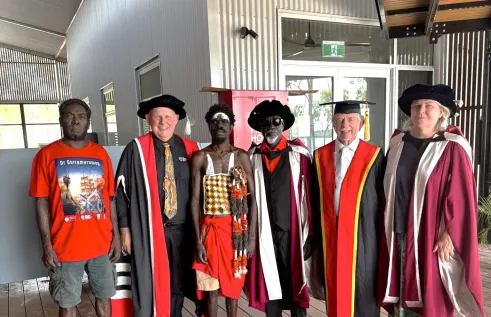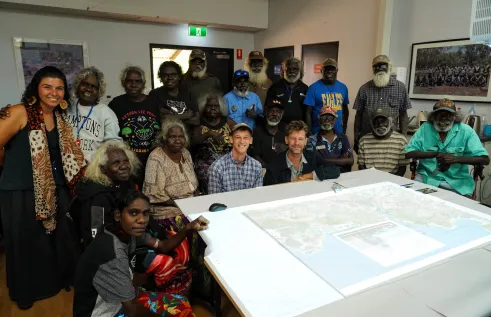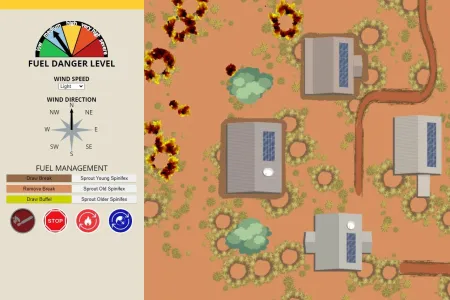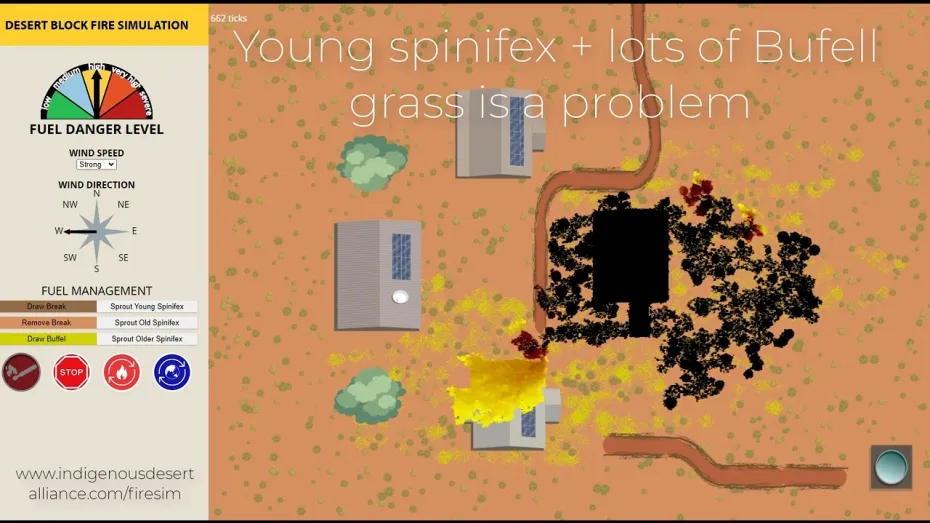Desert fire simulation a gamechanger for education and engagement
A new simulation game is helping Indigenous rangers, landowners, children and more to learn about fire behaviour and how they can mitigate the increasing threat of infernos.
The Desert Block Fire Simulation, developed by the Indigenous Desert Alliance and Charles Darwin University’s (CDU) Northern Institute, contains three games in which users can learn about the challenges of fires in desert country.
The simulation shows how weather, wind and spinifex grass affect how fires behave, with users tasked to protect buildings, waterholes and the Tjakura burrows, home of the great desert skink. Users can sprout spinifex, add the invasive Buffel grass, set sparks and watch how the fire burns and travels.
CDU Northern Institute Researcher Dr Rohan Fisher and his team has worked with the Indigenous Desert Alliance over the past year to develop the simulation.
“We learn by doing. Rather than telling people what do to, they are teaching themselves,” Dr Fisher said.
The game follows an earlier simulation created by Dr Fisher and his team in 2018, working alongside Bushfires NT to develop the Darwin Rural Fire Simulation. Users must protect homes on rural blocks as the game simulates the behaviour of bushfires fuelled by gamba grass.
Since the simulation’s release, it has become a crucial part of community engagement with Bushfires NT and incorporated into teaching at a local school in the Top End’s Dundee region.
“Kids took these lessons to their parents, and it was a driver in efforts to control gamba grass in the Dundee region,” Dr Fisher said.
“It’s amazing to go from a game to having significant impacts on the ground.”
Dr Fisher hopes the desert simulation will have the same success and is working with regions around Australia to develop similar applications in different settings.
“You can’t use the simulation to predict fires, but you can use it for engagement and building resilience,” Dr Fisher said.
“There are applications of this work across a range of environments, and also for areas such as disaster risk mitigation and resourcing.”
Related Articles

First Yolŋu awarded a PhD through CDU
In an Australian first during a special conferral celebration that took place in remote East Arnhem land at Yalakun outstation last week, a late Yolŋu leader from East Arnhem received a Posthumous PhD.
Read more about First Yolŋu awarded a PhD through CDU
3D printed map brings Elders’ knowledge to life
Multimedia and 3D technology are the latest tools being used by Elders in Maningrida to share their traditional knowledge and ancient stories, facilitated by a collaboration between Charles Darwin University academics.
Read more about 3D printed map brings Elders’ knowledge to life
Research reveals how Australians really feel about the world's largest proposed solar farm
Australians are substantially supportive of renewable megaprojects, but their approval begins to wane if the produced energy doesn’t benefit them, according to a new study examining social acceptance of the proposed world’s largest solar plant.
Read more about Research reveals how Australians really feel about the world's largest proposed solar farm

